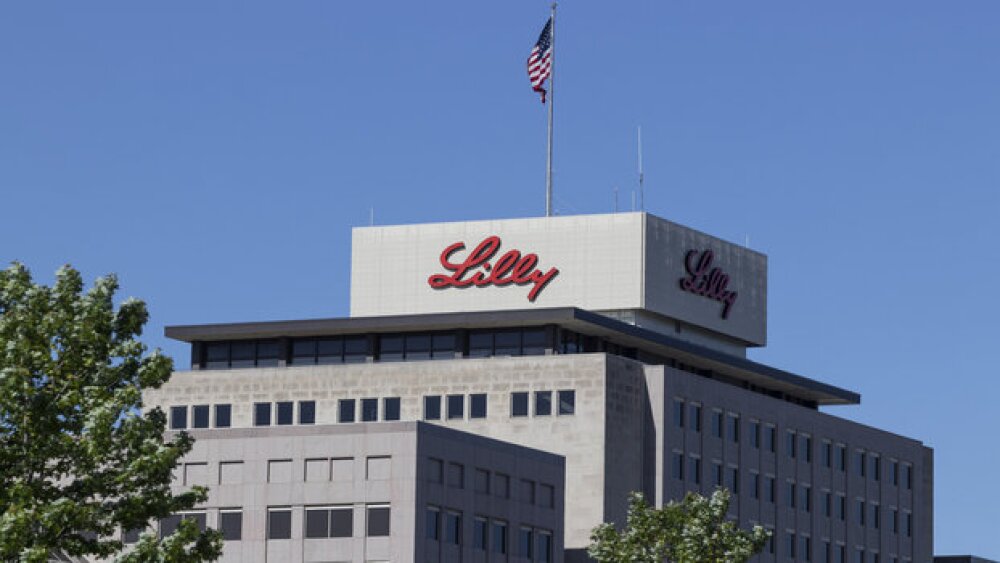As evidenced by this week’s buyouts by J&J and Merck, Big Pharma appears to have found a sweet spot favoring smaller deals over megabillion-dollar acquisitions.
This was a short week due to the Memorial Day holiday. However, there were several small acquisitions announced by big players. Merck on Wednesday announced a $1.3 billion upfront payment, and $1.7 billion in potential milestones, to buy EyeBio and its first-in-class trispecific antibody Restoret, marking the company’s return to the ophthalmology space after nearly a decade.
In a note to investors, BMO Capital Markets commented that while the EyeBio deal was “on the smaller side,” the analysts are “encouraged by the progress Merck continues to make diversifying its revenue base” ahead of 2028’s loss of patent protection for its cancer blockbuster Keytruda. For now, Keytruda remains Merck’s top seller, raking in $6.9 billion in the first quarter of 2024, a 20% sales increase compared to the same period last year and higher than analyst expectations of $6.71 billion.
There’s no doubt biopharma M&A activity will continue to pick up speed as companies anticipate drug patent expirations over the next few years. Merck CEO Rob Davis told analysts in February that the company is “continuing to do smaller deals” like its $680 million buy of cancer drug developer Harpoon Therapeutics in January. “So, it’s going to be a range of deals,” Davis said, noting that the $1 billion to $15 billion range “continues to be where we look.”
A Leerink Partners report last month found that biopharma M&A activity increased more than 100% in Q1 of 2024 with 13 transactions, compared to six deals in the same quarter last year. “Large biopharma continues to face impending revenue gaps due to anticipated patent expiries and will continue the recent trend of targeting commercial stage or clinically de-risked companies in billion-dollar-plus deals,” according to the report.
Tuesday’s Johnson & Johnson $1.25 billion cash deal for Numab Therapeutics’ bispecific antibody, slated to enter Phase II studies, follows J&J’s $850 million Proteologix acquisition earlier this month, which added bispecific antibody assets for atopic dermatitis to its pipeline. They’re both smaller M&As, but J&J CEO Joaquin Duato told analysts in April that given “the strength of our cash flow and our balance sheet, we have significant flexibility to consider multiple types of transactions” and will “continue to evaluate opportunities agnostic to the sector and size.”
While Leerink’s report acknowledged that transactions larger than billion-dollar-plus are possible, they expect to see “significant activity away from the mega deals” given FTC challenges to M&A in 2023.
On Tuesday, Japanese conglomerate Asahi Kasei announced that it made a $1.1 billion offer to purchase Sweden’s Calliditas Therapeutics and secure access to IgA nephropathy (IgAN) therapy Tarpeyo, which won the FDA’s full approval in December 2023. The deal is confirmation that larger companies are looking to scoop up smaller ones focused on unmet medical needs with treatments for rare diseases such as IgAN.
Earlier this month, Novartis announced plans to buy radiopharmaceutical company Mariana Oncology for $1 billion upfront, with another $750 million in milestones, to nab a pipeline led by a peptidic small molecule candidate to treat small cell lung cancer using a radioactive actinium payload.
This deal in the hot radiopharma space is in line with what Novartis CEO Vas Narasimhan told CNBC in January: that the company’s overall M&A strategy is “to focus on sub-$5 billion assets.” At the time, Narasimhan said that “while we look at larger deals, our M&A strategy is bolt-ons—we did 15 deals last year, all under $3 billion.” The Swiss pharma’s dealmaking spree continued in February with the $2.9 billion acquisition of German biotech MorphoSys, an effort to strengthen its oncology portfolio.
Leerink predicts that biopharma M&A activity in 2024 will “remain robust as large pharmaceutical companies attempt to fill revenue and pipeline gaps via acquisitions of late- or commercial-stage companies.” The firm contends buyers will continue to show interest in oncology, which was the most active therapeutic area in Q1, particularly radiopharma and antibody-drug conjugates. For now, it appears Big Pharma favors smaller M&A over megabillion-dollar deals.
Greg Slabodkin is the news editor at BioSpace. You can reach him at greg.slabodkin@biospace.com. Follow him on LinkedIn.






